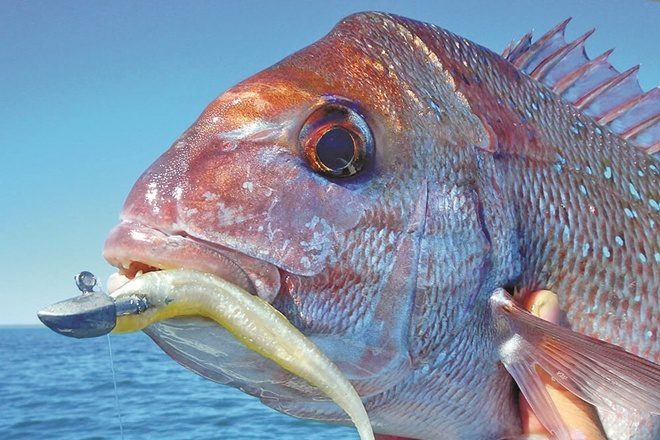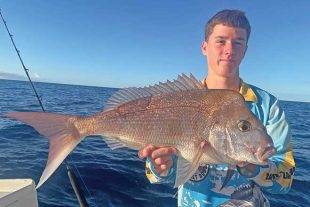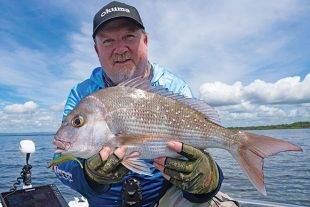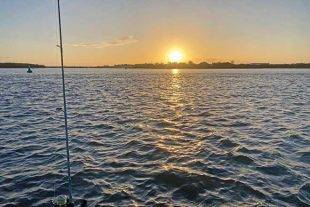WITH winter upon us, it’s time dust the gear off and head out into Moreton Bay, as now’s the time to get serious about targeting snapper. Snapper generally feed while on the move – bottom feeding on octopus and small crustaceans – and will also feed mid-water for squid and baitfish. Moreton snapper tips
As offshore fish enter the bay, snapper numbers increase and quite often you can tell the difference between resident bay snapper and offshore ones – the offshore variety tend to be brighter in colour than resident bay snapper, with the pink and blue spots being brighter. You have two ways to target snapper – anchoring or drifting.Moreton snapper tips
During weekends, you will often find it difficult to drift due to the number of boats around, so anchoring is generally your only option with a good berley trail. Or get out early, which is the premium time to target snapper before the sun rises over Stradbroke and Moreton islands, and drift until the daylight brigade turns up. The same applies for evening – I will go out around an hour before the sun goes down and sound over the areas I intend to drift.

This is mainly looking for bait or trying to find it’s holding. For evening, the best time is an hour and a half before high tide, at around 5-6pm. The morning is the same, when a good high tide peaks at around 4-5am. Once these times have finished and the daylight brigade turns up in numbers, I usually pack up and do one of two things… go home or head over to the Rous Channel and target squid, diver whiting or try and troll up a few doggy mackerel.Moreton snapper tips
When drifting, you rely on two things – a good wind or current. The secret to fishing for snapper on the drift is no sinker or very a light one. This will keep your bait off the bottom and will ensure you don’t get snapped off or that your hook isn’t dragged across the bottom, which eventually causes wear and tear. Bait for drifting is usually whole fish or squid.
I very seldom use pilchard as usually they only take one hit and fall apart, but I do use them for berley. I’d rather spend a little more and buy slimy or yakka – though a few of the shipping channel beacons do hold them – or a good strip of fresh mullet is the other option. Make sure your bait is fresh – and I mean fresh. Pilchard disappear or break up quickly when the pickers are about and also when a good snapper hits it.
In the squid department, I prefer to use the head as it resembles a small octopus. Cast the bait out and lie the rod down horizontally – not at a 45 degree angle which will make your bait go deep straight away – the ebb and flow of water will cause the bait to rise and fall, which is a natural movement of baitfish and is sure to attract the attention of snapper.Moreton snapper tips
Fishing for snapper comes down to a few variants – water temperature, water clarity, the availability of food and the hooks you’re using. Snapper are sensitive to changes in water temperature – a good sounder will display the current water temp. When the wind is calm, the top of the water column becomes much warmer than the deeper layers, but as the wind picks up warmer water mixes with cooler water, which is mainly caused by waves stirring the water up and one of the reasons snapper come on the bite more after strong winds.
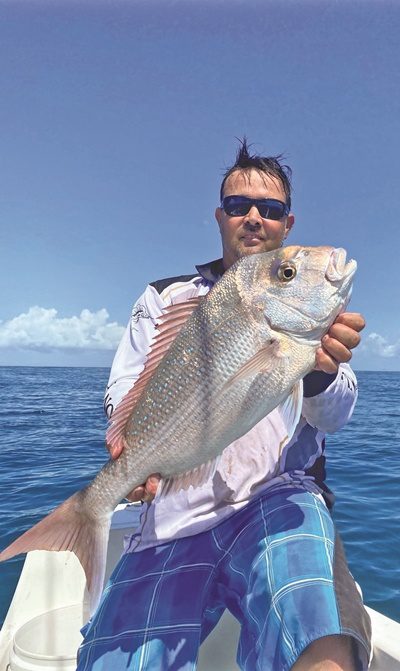
In calm conditions, the sunlight penetrates the water column deeper and tends to turn snapper off the bite. Yet when the water is choppy, it seems to bring them on the bite. Maybe the turbulence is disturbing the bottom and any food hiding there? Yet at night snapper will bite under the cover of darkness. Have you ever noticed that more species of fish come on the bite when it’s dark?Moreton snapper tips
A good way to get your drift right is to sound the area and mark spots, such as good structure or bait holding near it, on your GPS. Then go up current, taking a wide berth of the area you just sounded and start your drift so that it lines up with the marks you put into the sounder. When starting any of my drifts, I always do the above.
Noise is a big factor in turning fish off the bite, especially in aluminium boats. The clunk of a sinker on the side or bottom of your boat echoes below and this is really noticeable when you’re anchoring up. If there are any boats close by, the chains from these boats will certainly make a fairly loud ruckus below. This is where a bicycle tube on your chain will help minimise the noise, plus lowering your anchor by hand instead of throwing it over in a big bunch.Moreton snapper tips
Carpet on the floor will also help deaden noise. Hooks are a big factor in stopping a snapper and there is no better hook than a circle. Because big snapper tend to run a fair distance before swallowing the bait, drop your drag back and lie your rod horizontal. When they have run a bit, up the drag a touch and the circle hook will do the rest.
One of the best reels for fishing for snapper is a baitrunner – Shimano 450 OC and ST models – where the fish can run with no drag, then it’s a matter of hitting the lever to engage the reel. If using big bait, a double-snelled rig or a two-hook rig with the top hook used as a keeper.
CLICK HERE TO READ THE FULL ARTICLE!
 Bush 'n Beach Fishing Magazine Location reports & tips for fishing, boating, camping, kayaking, 4WDing in Queensland and Northern NSW
Bush 'n Beach Fishing Magazine Location reports & tips for fishing, boating, camping, kayaking, 4WDing in Queensland and Northern NSW
